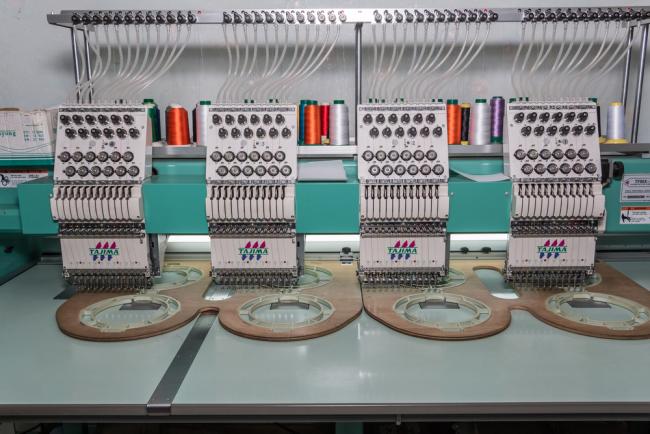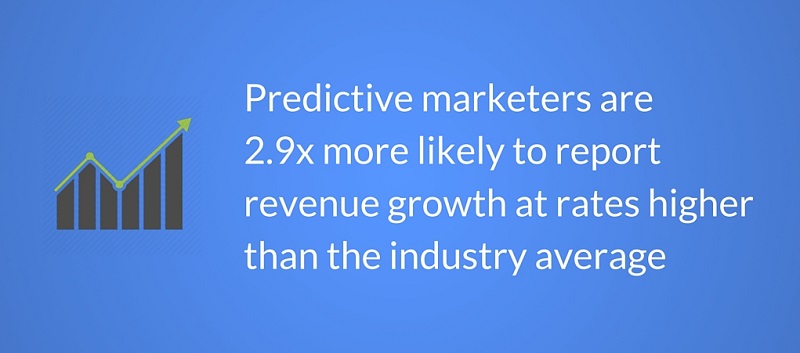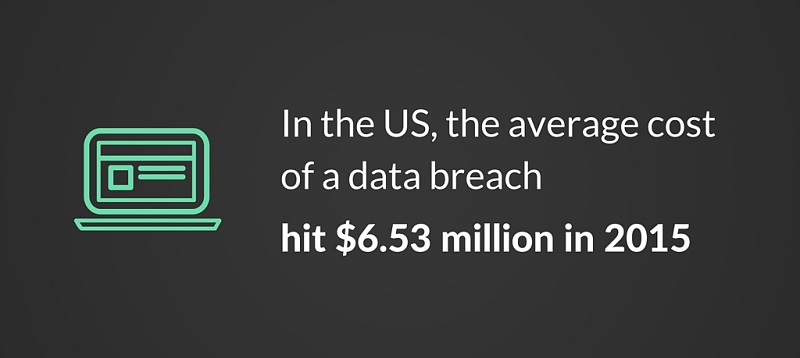Topics
Top 5 Apparel Manufacturing and Supply Chain Trends to Watch

Apparel supply chains and sewn products manufacturing are undergoing more technology- and data-driven change than ever. Here are five trends to watch in 2016 and 2017.
Internet of Things (IoT)
The Internet of Things, or IoT, are physical objects or devices embedded with actuators and sensors that are connected through wired and wireless networks.[1] These networks, which often use the same IP that connects the Internet, send out large amounts of data to computers for analysis. The two categories of IoT are ‘Information and Analysis’ and ‘Automation and Control.’[1] Information and Analysis is capable of tracking the behavior of people, things and data based on time and location with the use of sensors, calculating the real-time information of a physical environment, and helping to make decisions based on data visualization and analytics. Automation and Control regulates automated agents, consumption of resource, and uncertain autonomous control. In other words, the Internet of Things is adept in creating data for analysis and controlling automated devices.
The applications of IoT technology are extensive. For instance, in the healthcare industry, sensors can monitor the vital signs of patients and alert doctors to any irregularities. In agriculture, farming equipment can use satellite and ground sensor data to nourish each area of a field differently. Even aircraft with sensors built into them can inform manufacturers of needed repair before anything breaks or fails.[1]
Utilizing the Internet of Things is invaluable for the fashion and apparel industries. It provides brands, manufacturers, wholesalers and retailers with improved real-time data, efficiency, and precision. Adjustments can be made during any step of the manufacturing and retailing processes, from increasing production of popular products to dynamic pricing.[1]
IoT technology is becoming more accessible and crucial for businesses to adopt as prices fall and advancements in wireless networking technology and the standardization of communication protocols grow.[1] The Internet of Things will lead to new business models that integrate advanced analytics, connectivity, big data and data-driven services.[2]

Robotics and Automation
According to a 2014 PwC survey of US manufacturers, 59% of manufacturers are currently using some sort of robotics technology.[3] With 14,100 orders of industrial robots in the first half of 2014, a rise from 8,800 orders in the first half of 2007, the robotics and automation industry is showing tremendous growth.[4] Opponents of robots fault cost ineffectiveness, inadequate resources and proficiency, job-loss and weakened morale, and the questionable necessity of robots.[5] Although robots are taking on many of the manufacturing responsibilities that humans once performed, “botsourcing” or replacing humans with robots is not a large issue.[6] “Over one-third of manufacturers said that the biggest impact robots will have on the manufacturing workforce in the next three years is that they will lead to ‘new job opportunities to engineer advanced robots and robotic operating systems,’” according to a PwC survey.[6] Humans are taking on new and different tasks, such a developing robotic technology, and repairing, training, and overseeing robotic work. There has been a 35% increase in new high-skilled job opportunities to engineer robots and robotic systems, and a 28% replacement of workers.[6] Additionally, many US factories have found a way to use robotization to aid workers in their tasks. This approach, which is known as ‘cobotics’ helps create a safer, faster, and simpler manufacturing process.[7]
The most common task performed by robots is assembly.[8] This has been made possible with new sensor technology, which allows robotic agents to slow down or stop if a human comes too close.[9] Now, robots and humans can safely work side-by-side. These sensors also enable robots to sense whether parts are being assembled correctly.[9] Although it may be argued that humans have the same capabilities, robots are much more precise than humans. Human labor is met with risks of contamination, lethargy, and error.
Robotics will not only increase productivity, but will also reduce labor costs. As robots continue to take on the jobs of humans, the cost of labor will decrease.[9] Some industries, such as the garment industry, have a labor cost too high to be profitable in the United States. If robots were to continue to take over these jobs, these industries may flourish once again. Robotics will reduce the number of sweatshops abroad and the apparel industry will increase production within the United States. One example of a company that is attempting to do just that is Softwear Automation Inc., which raised $3 million of venture capital to develop robots that can sew garments.[9] The company’s goal is to move clothing production back to the United States.
Today, robots are much lighter.[9] This change is advantageous for manufacturers because they will be able to move robots to different areas of the factory and easily reinstall them. They will be able to take full advantage of the robots by repurposing them for a wider range of tasks.
Predictive Analytics and Advanced Analytics
Predictive analytics, a powerful strategy that combines elements of advanced analytics and decision optimization, has become a game-changer for many businesses.[10] In today’s competitive business environment, it isn’t enough to just have data. Companies need to know what to do with it. That’s where predictive analytics comes in. Predictive analytics supplements the pool of data with commands and solutions.[11] It assesses what transpired in the past to make decisions about what will occur in the future. This is done by combining many fields statistics, machine learning, and data mining- to scrutinize data.[12] It focuses in on “whom to target, how to reach them, when to make contact, and what messages should be communicated.”[10] The end goal is to discover what causes customers to behave a certain way.[13] This behavior could be a shift from a physical to an online store, upselling, etc. Predictive analytics can aid businesses with a multitude of tasks, from predicting what a customer may purchase, to optimizing prices, to analyzing text.[13] 86% of “executives who have been overseeing predictive marketing efforts for at least two years report increased return on investment (ROI) as a result of their predictive marketing.”[13]
The job market for data analysts is growing at an annual rate of 27%, surpassing the national job growth average, which is 11%.[14] This does not come as a surprise since 89% of marketers plan to use predictive analytics in 2016. After all, the benefits of predictive marketing are striking.[15]

Predictive Marketers are:
• “2.9x more likely to report revenue growth at rates higher than the industry average.”[15]
• “2.1x more likely to occupy a commanding leadership position in the product/service markets they serve.”[15]
• “1.8x more likely to exceed consistency goals when measuring the value their marketing organizations contribute to the business.”[15]
Cybersecurity
As companies begin to utilize new and advanced technologies, many are falling victim to cyberattacks. Cybercrimes are no joke. A PwC survey shows that in 2016, 54% of organizations that have reported economic crime were struck by cybercrimes in the last two years.[16] Companies are beginning to realize that they may be truly unprepared for a major breach or attack. In 2014, JP Morgan Chase was still hacked, despite having a cybersecurity team of over 1,000 employees with a budget of $250 million.[17] Just over half of US companies have active cyber-incident response plans in2016.[16] They are even less equipped for attacks on the newest technology. Only 21.1% of companies surveyed have cloud security strategies in place and 33.7% have mobile device security strategies in place.[18] In the US, the average cost of a data breach hit $6.53 million in 2015.[17]

Cybersecurity is becoming a top priority for many businesses. To implement a successful cybersecurity strategy, security leaders must show the correlation between the company’s aspirations and its security. The 2016 information security survey by PwC showed that 91% of organizations have adopted a security framework to help them discover threats, diminish risks, and evaluate security gaps. The survey revealed that 69% of organizations began to use cloud-based security, 59% leveraged big data analytics, and another 59% invested in cybersecurity insurance.[19] The goal is to keep the most important data safe, whether it is financial data, intellectual property, or customer information.[18] That way, companies can welcome new technology without the fear of being attacked.
Agile Supply Chain
Before choosing a supply chain strategy, a business must first evaluate itself. How predictable is your industry? Is it necessary for you to have a large inventory? Is the technology and consumer demand constantly changing? According to Richard Wilding, Professor of Supply Chain Strategy at the Cranfield School of Management, businesses in less predictable environments that are accompanied with low volumes and high variability need agility.[20] Agility refers to a flexible and fast supply chain, which is beneficial for companies that sell products with an irregular demand.[21] An agile supply chain uses real-time data and forecasts demand to establish a proficient, flexible, prompt, and alert supply chain.[22] Organizations who embrace the methodology have the ability to rapidly adjust their sales, sourcing, and logistics.[20]
94% of companies that instituted agile supply chains found that they were able to deliver products on time, while holding onto inventory for less than 85 days. Companies that did not establish an agile supply chain delivered on time only 87% of the time and held onto inventory for more than 108 days. This means that companies with agile supply chains had service levels 7% higher and 23 days sooner than less agile companies.[23]
Agile companies performed well in the following areas:*[23]
• Labor and asset flexibility (76%)
• Risk management (75%)
• Inventory placement (75%)
• Integrated planning (73%)
• Forecasting (70%)
*Percentages refer to the percentage of agile companies in the top quartile for the given area
References
[1] http://www.mckinsey.com/industries/high-tech/our-insights/the-internet-o...
[2] http://www.gilcommunity.com/blog/manufacturing-trends-watch-2016/
[3] http://www.pwc.com/us/en/industrial-products/next-manufacturing/robotic-...
[4] http://www.pwc.com/us/en/industrial-products/next-manufacturing/robotics...
[5] http://www.pwc.com/us/en/industrial-products/next-manufacturing/robotics...
[6] http://www.pwc.com/us/en/industrial-products/next-manufacturing/robotics...
[7] http://www.strategyand.pwc.com/perspectives/2016-manufacturing-trends
[8] http://www.pwc.com/us/en/industrial-products/next-manufacturing/robotics...
[9] http://www.wsj.com/articles/meet-the-new-generation-of-robots-for-manufa...
[10] http://www.spss.com.hk/predictive_analytics/work.htm
[11] http://www.forbes.com/sites/paulmartyn/2015/12/15/five-supply-chain-pred...
[12] http://www.sas.com/en_sg/insights/analytics/predictive-analytics.html
[13] http://www.forbes.com/sites/joemckendrick/2015/10/30/the-downstream-bene...
[14] http://www.forbes.com/sites/valleyvoices/2016/01/20/five-ways-data-analy...
[15] http://www.forbes.com/sites/louiscolumbus/2016/01/24/89-of-b2b-marketers...
[16] http://www.pwc.com/us/en/forensic-services/economic-crime-survey-us-supp...
[17] http://www.businessinsider.com/cyber-attacks-are-costing-companies-milli...
[18] http://www.pwc.com/us/en/view/issue-15/cybersecurity-business-priority.html
[19] http://www.pwc.com/gx/en/issues/cyber-security/information-security-surv...
[20] http://blog.procurify.com/2014/04/22/agile-lean-supply-chain-management/
[21] http://www.industryweek.com/blog/mass-customization-lean-and-agile-suppl...
[22] http://cerasis.com/2016/02/18/agile-supply-chain/
[23] http://www.mckinsey.com/business-functions/operations/our-insights/how-a...

